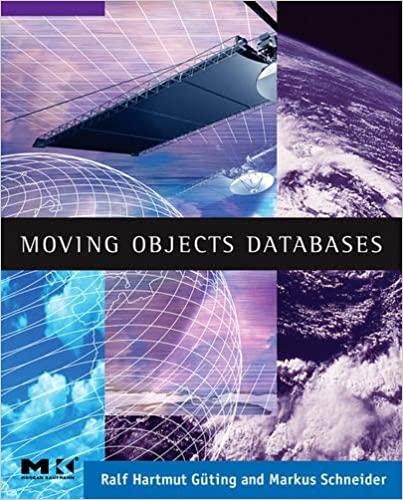
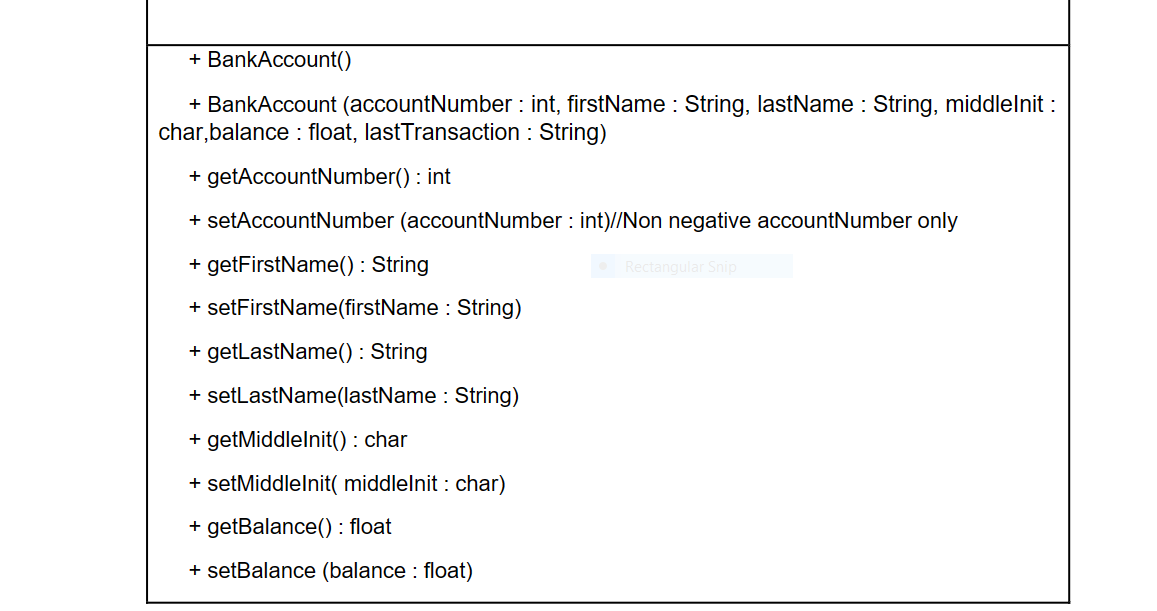

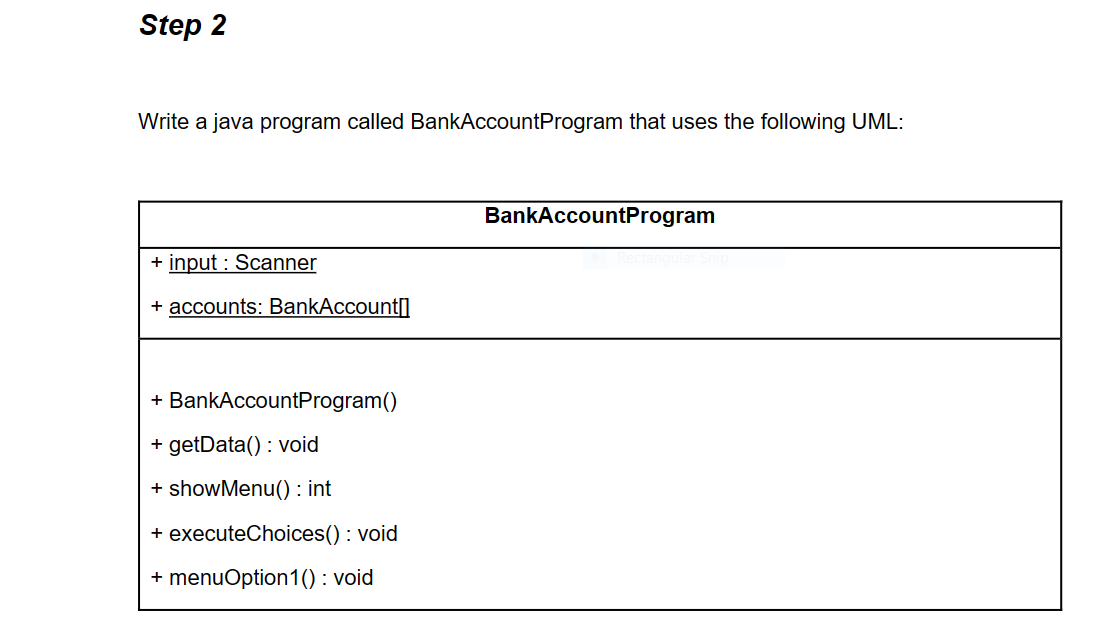
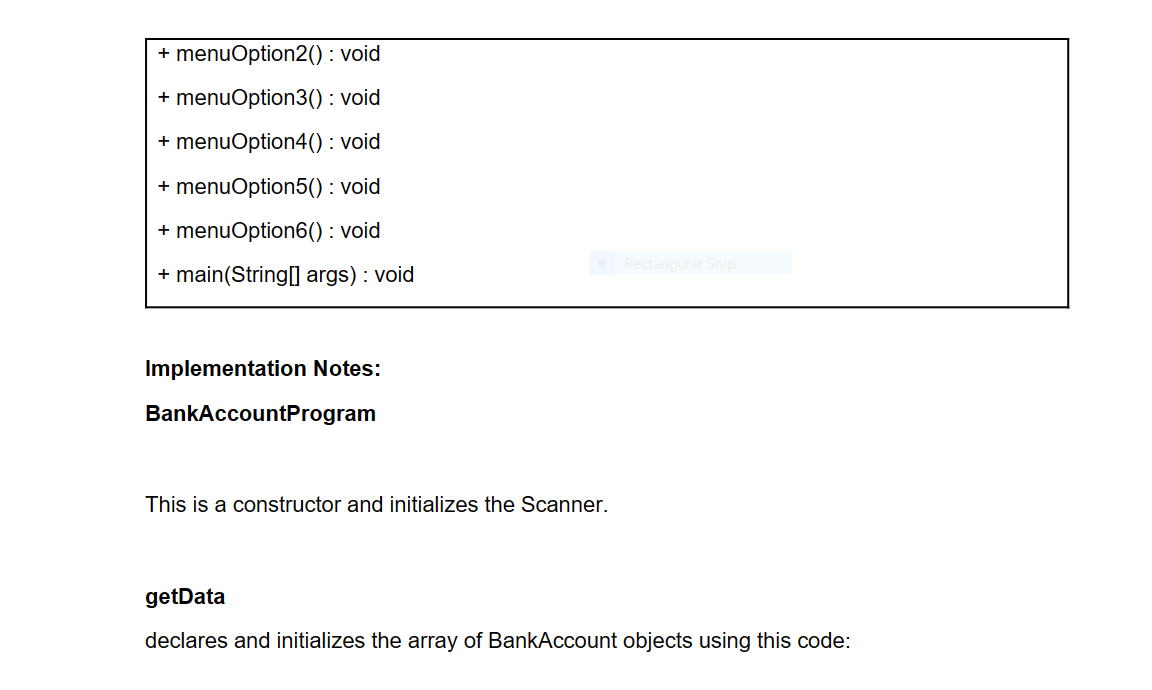

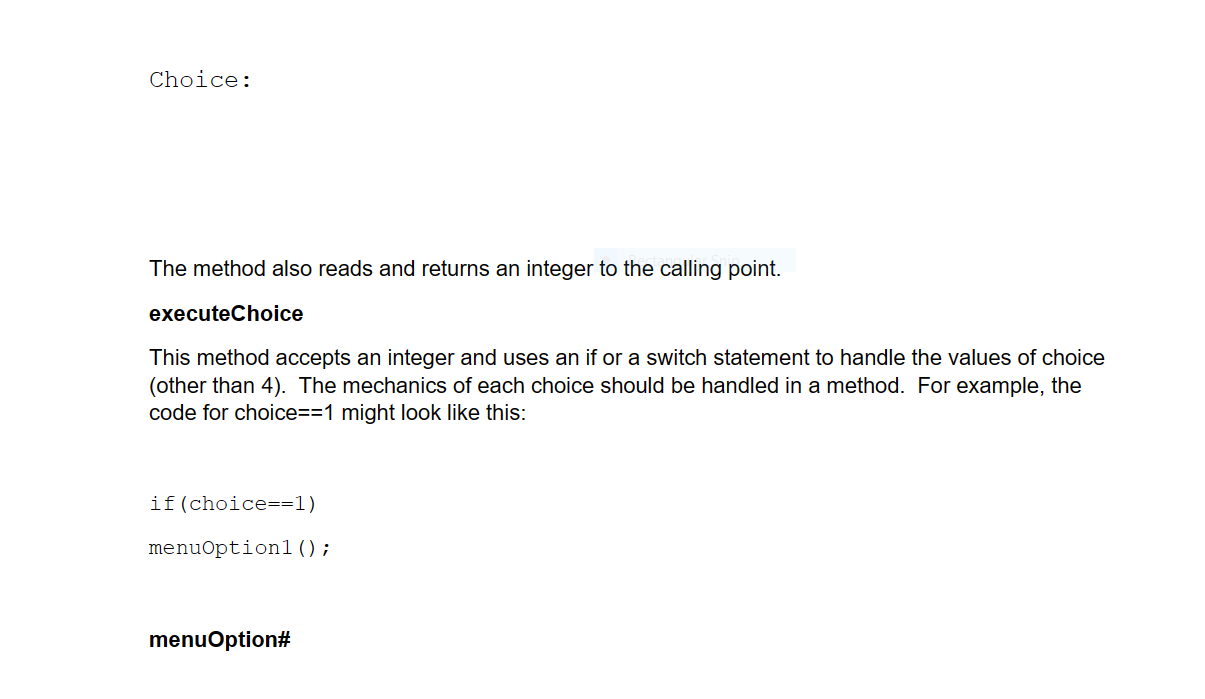

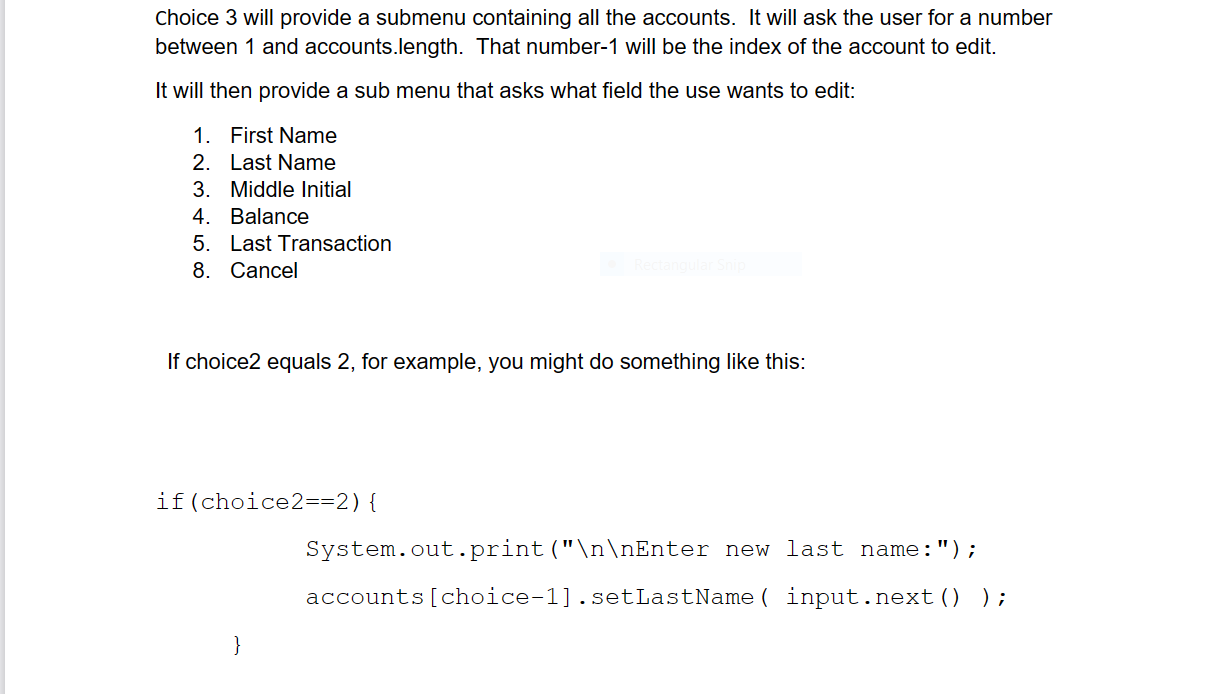

In this lab you will build a BankAccount class. You will then write a Java program that declares an array of BankAccount objects. The program will then provide the user with a menu that lets them view all the balance of the accounts, view a specific account, edit a specific account's data, or exit the program. Step 1 Declare a BankAccount class. The BankAccount class corresponds to the following UML diagram: + BankAccount() + BankAccount (accountNumber : int, firstName : String, lastName : String, middlelnit char,balance : float, lastTransaction : String) + getAccountNumber() : int + setAccountNumber (accountNumber : int)//Non negative accountNumber only + getFirstName(): String + setFirstName(firstName : String) + getLastName(): String + setLastName(lastName : String) + getMiddlelnit(): char + setMiddlelnit( middlelnit : char) + getBalance() : float + setBalance (balance : float) + getLastTransaction() : String + setLastTransaction (lastTransaction : String) + deposit (amount : float, lastTransaction : String) //balance=balance+amount //and set new lastTransaction date //only set positive amounts + withdraw (amount : float, lastTransaction : String) + transfer (amount : float, account : BankAccount, lastTransaction : String) Write a java program called BankAccountProgram that uses the following UML: getData declares and initializes the array of BankAccount objects using this code: accounts = new BankAccount [5]; accounts [0]= new BankAccount (1001, "Danny", "Vito", "D", 3200.50, "07/09/23"); Complete the array with 4 more declarations. Each element of the array is now an instance of the BankAccount object. showMenu Show menu displays a menu that looks like this: Menu 1. Display all accounts 2. Display info for account by account number 3. Edit information for account by account number 4. Deposit into account by account number 5. Withdraw from account by account number 6. Transfer from one account to another 7. Exit The method also reads and returns an integer to the calling point. executeChoice This method accepts an integer and uses an if or a switch statement to handle the values of choice (other than 4). The mechanics of each choice should be handled in a method. For example, the code for choice ==1 might look like this: if (choice==1) menuoption1(); menuOption\# These methods handle the menu options selected by the user. For example menuOption1 would produce the following results: Account Number: 1001 Name: Danny D. Vito Account Number: 1002 Name: Kailtyn D. Olsen wetc choice 2 would look something like this: Account Data Full Name: Danny, Vito D. Balance: 3200.50 Last Transaction: 07/09/23 choice 3 will provide a submenu containing all the accounts. It will ask the user for a number between 1 and accounts.length. That number-1 will be the index of the account to edit. It will then provide a sub menu that asks what field the use wants to edit: 1. First Name 2. Last Name 3. Middle Initial 4. Balance 5. Last Transaction 8. Cancel If choice2 equals 2 , for example, you might do something like this: Choice 4 of the main menu: Enter account id and prompt user how much theyd like to deposit
















